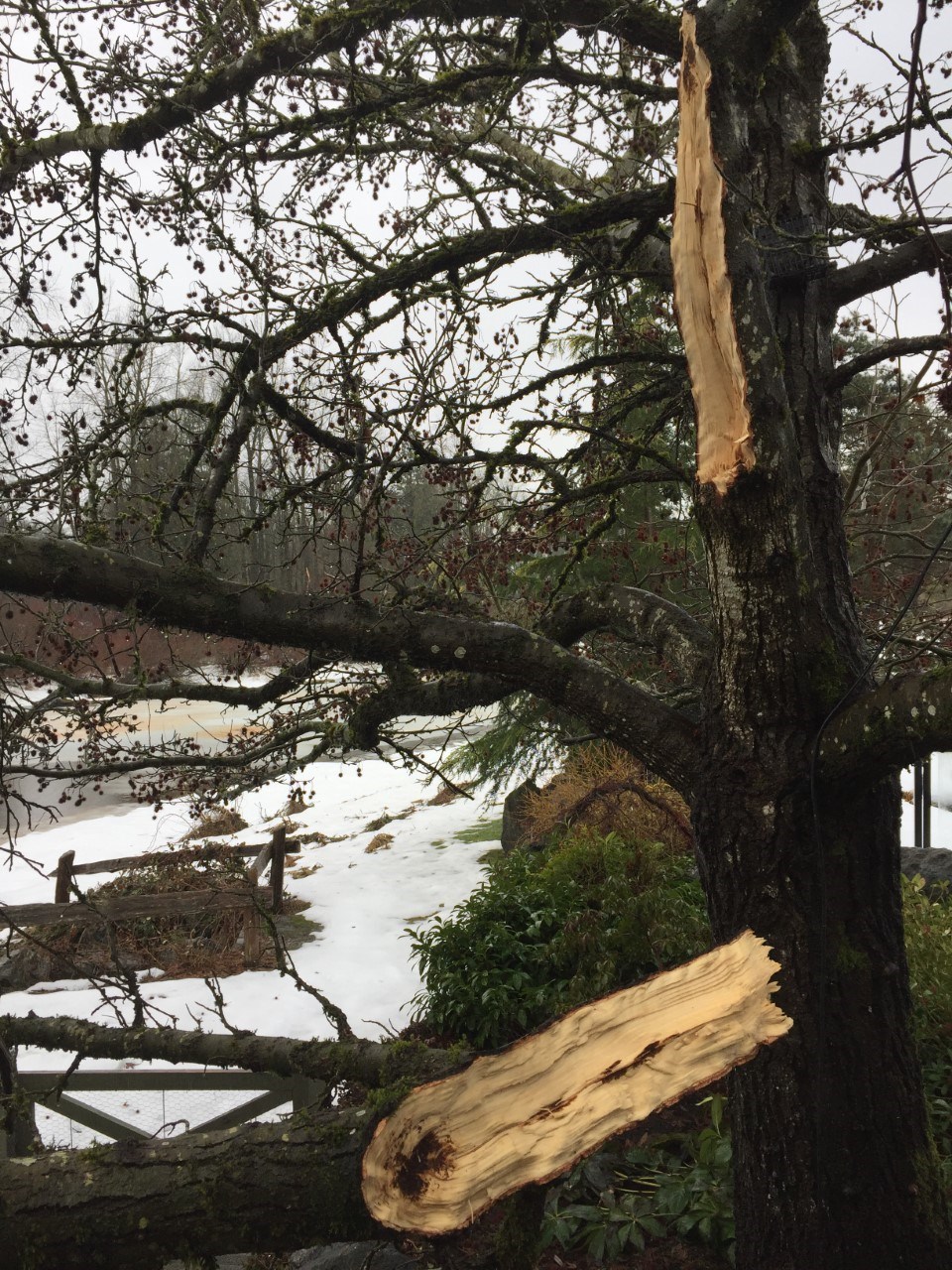The following column was submitted to the Tri-City News from Brian Minter — master gardener, best-selling author, Order of Canada recipient and co-owner of Minter Country Garden Store.
The latest ice storm, particularly in the eastern Fraser Valley, has taught us all some valuable lessons about pruning.
More often than not, the trees which were properly pruned suffered little damage, while many others were completely destroyed.
This is a simplification, of course, but one of the concepts of pruning, especially larger trees, is to make them more resilient and able to withstand extreme weather, such as strong winds, heavy snow and freezing rain.
Damaged trees should be dealt with as soon as possible, assuming you can get to them during these current weather conditions.
Safety is the first concern, both for people and property. For larger trees and heavy, dangerous branches, arborists, who have the proper training and equipment, should be called in to assess the damage and remove any hazards.
They are also the professionals who can determine if the tree should be removed or pruned back into shape.
Arborists provide a valuable services when dealing with so many potential issues and problems. They are a great resource.
In many home garden situations, however, folks can easily clean up weather damaged plants and smaller trees. The most important thing to do is assess the situation.
In many cases, it involves simply pruning back broken branches and making sure the tree looks well balanced by pruning all sides equally.
One of the major problems after a storm is split trunks. When this is the case, cut the tree back below the split to encourage new growth and to have the tree regrow to its previous shape. If the tree has a well-established root system, the regrowth will happen fairly quickly, and you will be surprised how much regrowth occurs the first season.
Another issue is when a major limb breaks and, as it falls, it pulls the bark off the tree.
If the torn bark is less than one-third of the tree’s total girth, the wound will recover.
However, with the limb gone, the overall look and shape of the tree could be severely affected.
Sometimes, simply pruning back all the branches around the tree’s circumference will solve the problem and will create future growth that is balanced.
These are all judgment calls, and in some cases, removing the tree might be the most practical and best solution.
Whenever you have larger trees removed, it’s best to call and get a price from a local tree service company that has the equipment and know-how to do the job efficiently.
When having a tree removed, one thing to consider is: In the future, do you want to plant a replacement tree in the same spot? Having the roots removed completely will make planting a new tree far easier. It is often suggested to merely grind down the stump, but the challenge of dealing with a huge, intact root system can be daunting.
During this recent cold spell and freezing rain, there has been significant tree damage, particularly in Chilliwack and other parts of the Fraser Valley.
Once you have cleaned up, please think long-term about the future of your landscape. Trees are invaluable, especially in today’s world, so professional advice can be very helpful.





